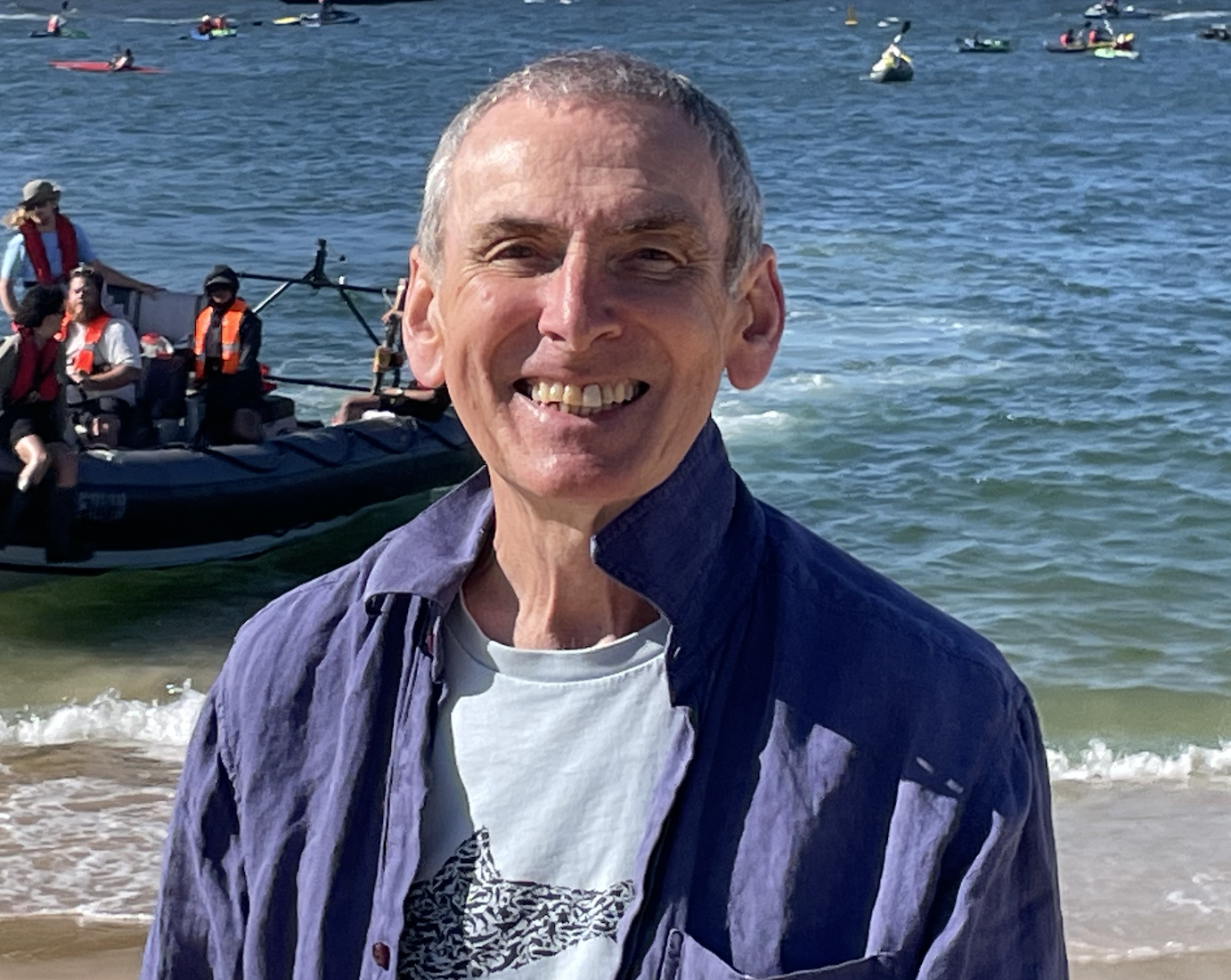Environment: One giant leap for mankind was nothing compared with today’s challenges
February 2, 2025
Facing the challenges of the energy transition sustainably and fairly. British Medical Journal jumps into the degrowth debate. Let’s all celebrate World Wetlands Day.
A challenge the world is unwilling to accept
In September 1962, President Kennedy memorably said:
‘We choose to go to the moon in this decade and do the other things, not because they are easy, but because they are hard, because that goal will serve to organise and measure the best of our energies and skills, because that challenge is one that we are willing to accept, one we are unwilling to postpone, and one which we intend to win.’
It wasn’t essential in 1962 for the USA, or Russia, to try to go to the moon but it is essential in 2025 for humanity to get on top of the multiple environmental and social challenges that we face. As Kennedy said about the moon project, the challenges will be hard (much harder than going to the moon) but also ones that we should be completely unwilling to postpone and intend to win.
Unfortunately, we’ve been postponing real effort for 30 years and there’s little indication from the world’s political and corporate leaders of any intention to change. Perhaps they are too ignorant of the science or too selfish to care.
Four stories this week from NSW, Indonesia, Columbia and Nevada illustrate some of the problems that we must inevitably confront with our energies and skills should we accept the hard, but possibly still winnable, challenge of creating a just and environmentally sustainable global society.
Pumped hydro, needed but at what price and who pays?
Lake Lyell, an artificial lake close to Lithgow in NSW, was created in 1982 when the state government dammed two rivers to supply water to nearby power stations. The lake is also available to the public for recreational purposes.
EnergyAustralia, the current owners of the lake and adjacent land and rivers, is now investigating the feasibility of building a pumped hydro energy storage plant that will operate when consumer demand peaks and exceeds what wind and solar can produce.
EnergyAustralia plans to use Lake Lyell as the lower reservoir and to construct a new upper reservoir on the slopes of Mount Walker, 1km away and 200m higher. The energy storage plant is expected to provide enough energy to supply 150,000 homes for up to eight hours and have a lifespan of around 80 years. In 2024, the NSW Government declared the Lake Lyell Pumped Hydro project to be Critical State Significant Infrastructure. A decision on the proposal is expected during 2025, with operations possibly beginning in 2030.
In December 2024, EnergyAustralia issued a Community Newsletter that provided an update on the planning process. In a section called ‘Getting the facts’, the project team responds with ‘facts’ to six concerns expressed by members of the community about the project. For instance, ‘This is the right project in the wrong location’ and ‘It uses more energy than it generates’.
Lake Lyell Community Group has been created, I’m not sure when, for the ‘information and enjoyment of Lake Lyell enthusiasts’. They claim to have 2,600 members, with new ones joining regularly it seems. On January 8, a response to EnergyAustralia’s facts was posted on the group’s facebook page: ‘… these so-called facts are largely misleading opinions shaped totally by EnergyAustralia’s view on the project. The newsletter conveniently glosses over extensive detail of key concerns raised by the community about the project’.
The facebook post focused on the permanent destruction of 167 hectares of Mount Walker, the risk presented to numerous species of plants and animals, the absence of a plan for the mountain after the storage plant stops operating, the advantages of storage batteries over pumped hydro, the damaging effects on local businesses and on local residents’ lifestyles and amenity, and the ethics of removing Indigenous artefacts from affected areas.
I raise this issue not because I have any views for or against this specific proposal, I haven’t done enough homework for that. But because it provides a close-to-home example of the difficulties that will be encountered and must be satisfactorily handled and resolved as we progress the energy transition.
I’m convinced that we need more pumped hydro facilities but I’m equally convinced that proposals need to be fully assessed so that they are sited appropriately and do the least environmental damage. I’m also convinced that communities (local and beyond) need to be fully informed about the plans and involved in the planning process. I also accept that you can’t make an omelette without cracking a few eggs.
I’m sure the editor would be interested to consider any articles about this project by better informed readers.
Growth or degrowth?
Over the last four years, P&I has published about 50 articles that have focused on or included reference to degrowth (not to be confused with ‘green growth’) as a strategy for tackling both the environmental problems that threaten human survival (climate change, loss of biodiversity, unsustainable land use, pollution, for instance) and the social problems that afflict human societies (poverty, inequality, lack of access to clean water and effective sanitation, poor access to necessary health care, etc.).
Without going into the details here, the core of the debate is whether ever-increasing economic growth, an essential element of capitalism, combined with growing consumption of limited natural resources is compatible with environmental sustainability, or whether, for the current environmental crises to be managed successfully, the global economy will need to undergo a process of planned degrowth (very different to and not to be confused with an economic recession) to stabilise it at a lower level.
Notwithstanding P&I’s interest, and some vigorous debates in the scientific and economic literatures, degrowth has seldom been part of the mainstream discussions or political discourse about climate change, loss of biodiversity, pollution, etc. An interesting recent development has been the publication of an editorial on degrowth in the highly respected and far-from revolutionary British Medical Journal – an editorial, note, not a research report or an opinion piece.
The BMJ emphasises that degrowth involves greater democratic control over the world’s productive forces ‘so that production can be centred around needs satisfaction (e.g. health outcomes and access to housing and food) and human wellbeing in harmony with ecology [and] and equitable reduction in global use of materials and energy’. The editorial also acknowledges that some nations and populations need to increase their use of resources to ensure that equity and decent living standards are achieved worldwide. Critics of degrowth delight in ignoring this important equity-promoting element of global economic degrowth.
The editorial’s conclusion belies the BMJ’s more conservative reputation: ‘__The quest for a socially and ecologically just future requires a struggle: a struggle in the global south to achieve sovereignty and economic liberation, and a struggle of working people everywhere to achieve economic democracy’. Music to the ears of the new leader of the free world, I’m sure.
One final note, most proponents of degrowth foresee a future characterised by considerably lower levels of consumption but still comfort, certainly not hunger and austerity - mind you, there are many in the world for whom ‘western’ austerity might look very attractive. There are some however, including Ted Trainer who writes regularly in P&I, who do see the necessity of much simpler lives with people living in smaller, largely self-sufficient local communities, what Ted calls ‘the simpler way’.
People, prosperity, nature and nickel
Just like pumped hydro, we need nickel for the energy transition – no doubt about that.
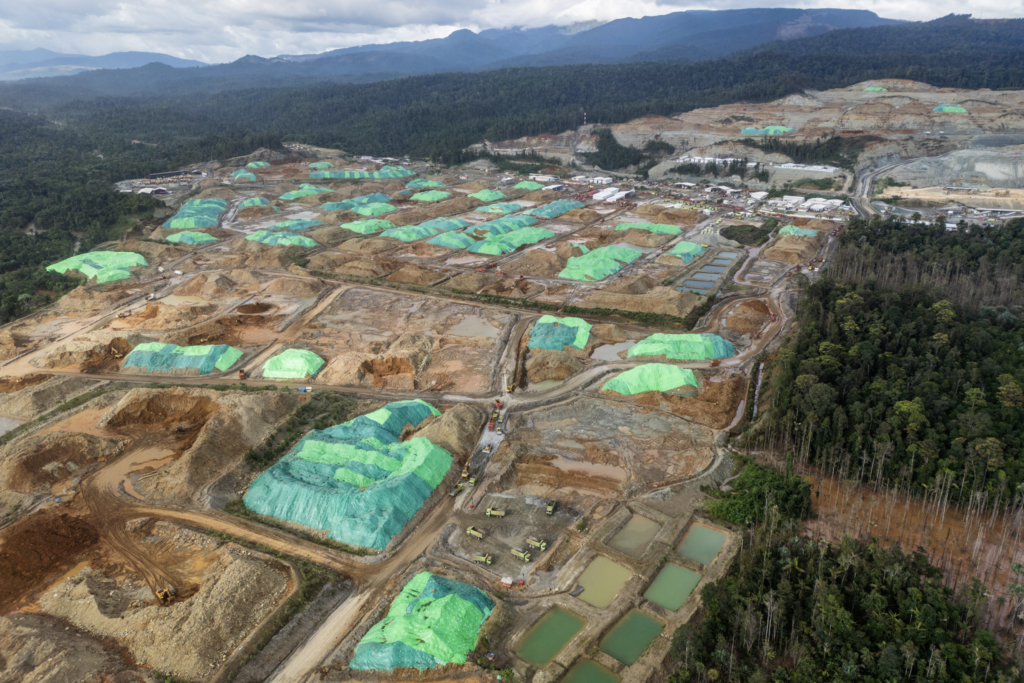
Nickel mine in land cleared of forest in Central Halmahera, Indonesia
Indonesia holds nearly half of the world’s nickel deposits. Indonesia also needs funds for its social development. Mining and its associated activities will create income and employment. Clearly, there’s a potential synergy here for the world and the Indonesian people. You’re ahead of me though, aren’t you – you can see that there’s a but coming.
Several big buts in fact: felling of native forests for the construction of mines, nickel smelters, coal-fired power plants and roads; increased flooding and landslides; toxic pollution of the air, land and waterways; release of greenhouse gases; loss of the rights and territory of Indonesia’s last nomadic, forest-dwelling, relatively isolated, Indigenous tribes; destruction of traditional hunter-gatherer lifestyles and sources of income; relocation of some tribes to inappropriate settlements and housing; and increased health problems, especially upper respiratory tract infections.
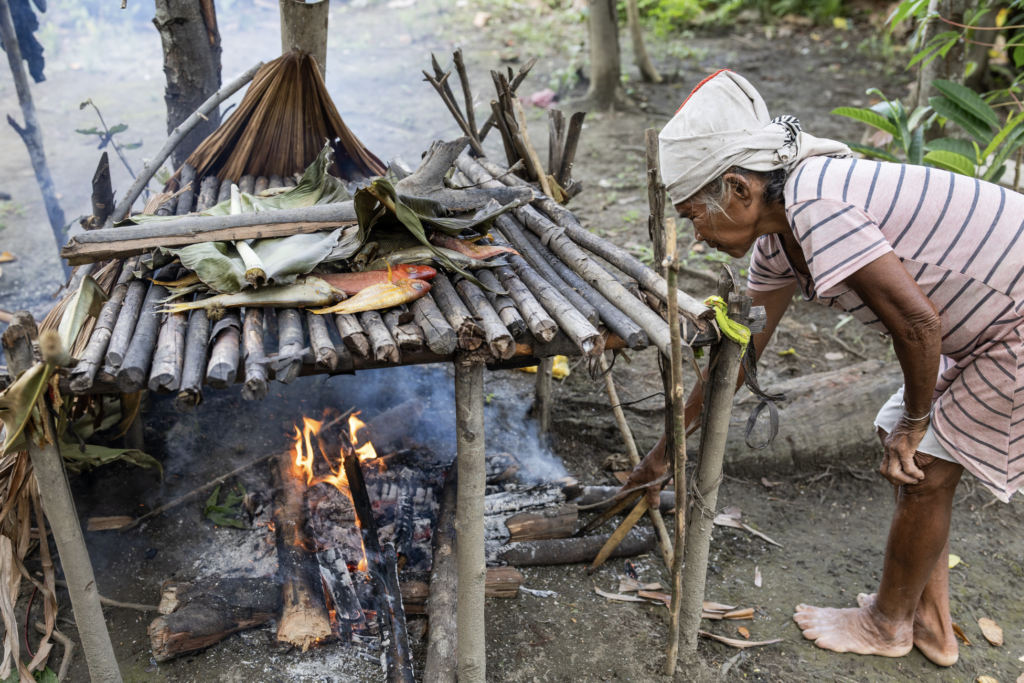
A woman from the O’Hongana Manyawa tribe smokes fish, August 2024
I encourage you to read the linked article to get a better appreciation of the dilemmas.
The energy transition and Indigenous land rights
Columbia is transitioning to renewable energy but wind farms in areas that are home to Indigenous peoples can infringe traditional land rights, tenure systems and livelihoods. Women are particularly at risk, especially in matrilineal communities.
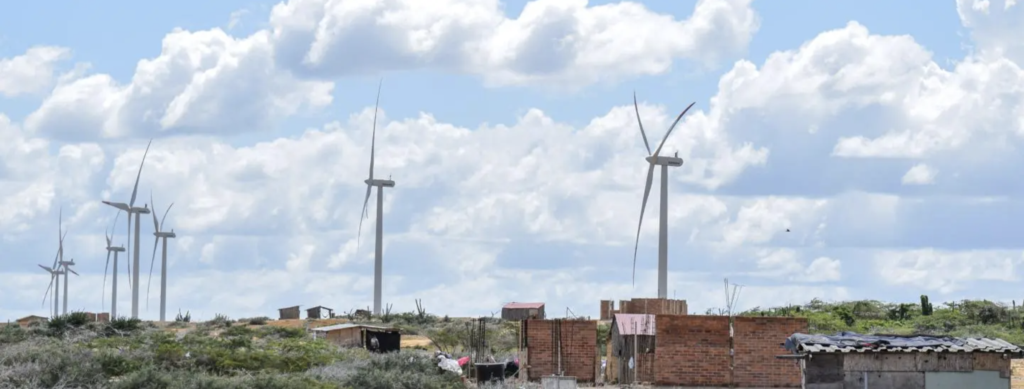
If you are really keen to explore energy transition trade-offs, the New York Times has a very interesting story of nickel mining, habitat destruction of endangered animals and plants, water use and pollution, toxic waste, dedicated individual activists and community mobilisation in the Nevada desert. As an aside, why don’t desert ecosystems have similar popular appeal as tropical rainforests, free-flowing rivers and coral reefs?
Today is World Wetlands Day
Wetlands are land areas that are saturated or flooded with water permanently or seasonally. They can be inland (marshes, swamps, lakes, rivers) or coastal (estuaries, saltwater marshes, mangroves) or human-made (fish ponds, rice paddies, dams).
Wetlands are enormously important for regulating water flow, freshwater availability, climate mitigation, wildlife and economies. Regrettably, they are grossly under appreciated and 90% have been drained and degraded in the last 300 years. They are currently being lost three times faster than forests.
February 2nd is World Wetlands Day, their moment in the sun. The Australian government is promoting 2025’s theme: Protecting Wetlands for Our Common Future.
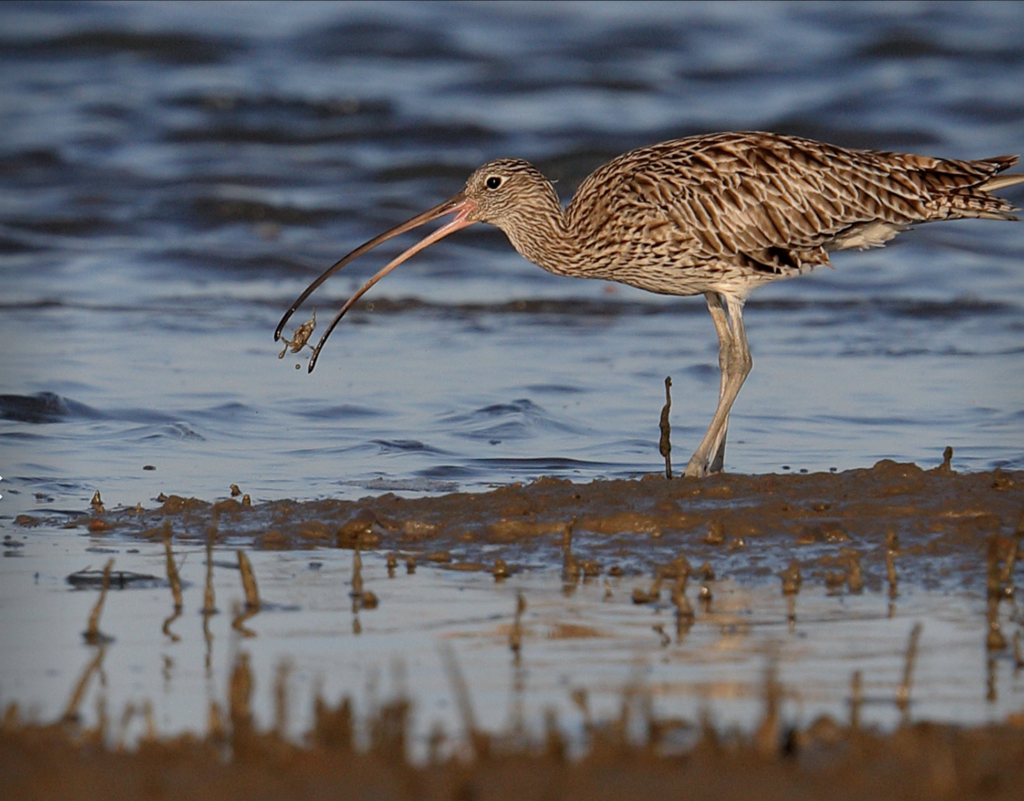
Eastern curlew in the now saved from development Toondah Harbour in Moreton Bay.
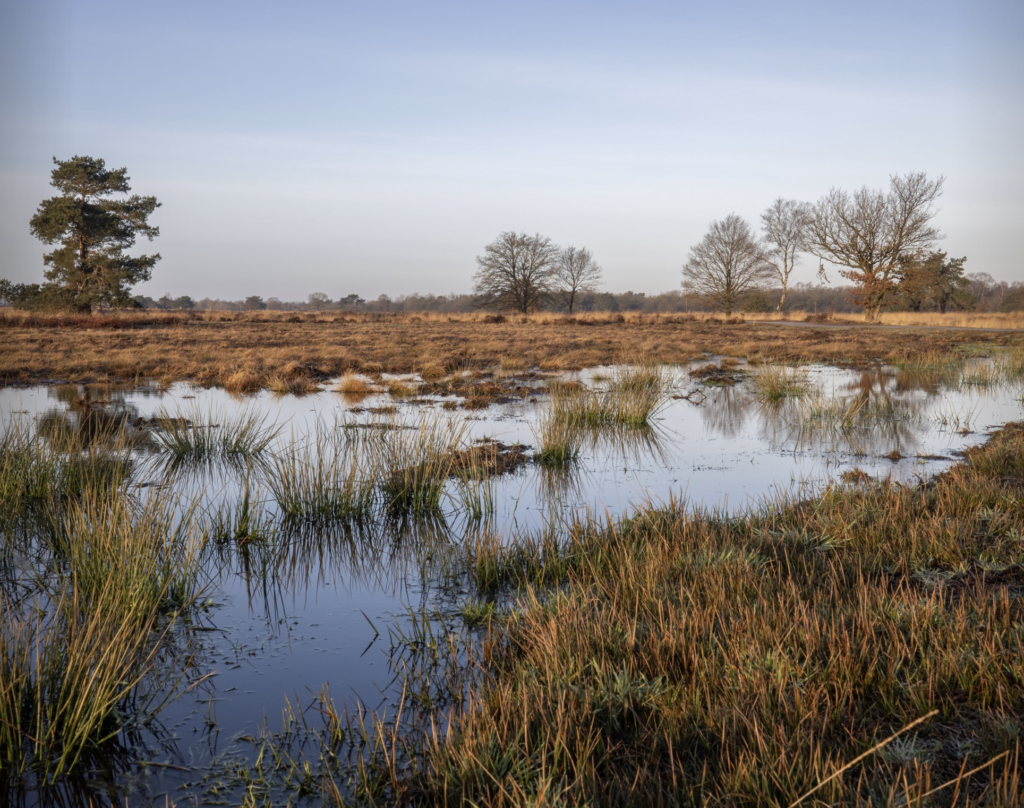
A raised bog in The Netherlands (‘bog’, ‘swamp’ – great words).

